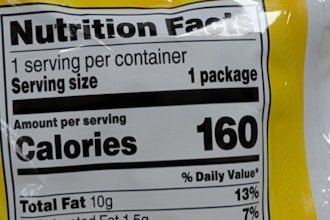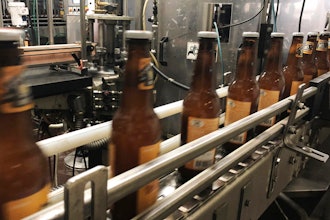
 Doug Niemeyer
Doug NiemeyerFaced with mounting labeling regulations and ever-changing customer preferences, the demand for agile labeling environments has never been higher among food and beverage manufacturers. Food Manufacturing asked Doug Niemeyer, General Manager of leading barcode and RFID labeling solutions provider TEKLYNX Americas, to provide his perspective on emerging regulations and the role technology providers play in creating these responsive labeling environments.
Q. Which labeling regulations have the most “buzz” among food and beverage manufacturers today?
The list of labeling regulations impacting food and beverage manufacturers is long and varied, but some of the most talked about regulations include:
- The Food Allergen Labeling and Consumer Protection Act (FALCPA): Requires that eight common allergens be prominently displayed on product packaging.
- The European Union’s Food Information for Consumers (FIC) regulation: Requires clearer, more readable labels for food items sold in Europe, including imported food or food sold online to European vendors.
- US bill S. 764: A federal standard mandating the labeling of foods containing genetically modified organisms (GMOs).
- The Food Date Labeling Act (FDLA): Expected to pass in Congress, it will require date stamps on all packaged food to follow a uniform system.
Q. How do some of the newer labeling regulations differ from some of the changes we’ve seen over the past couple of decades?
For decades, regulatory agencies created labeling regulations and the impacted food and beverage manufacturers sought to comply with these regulations by the published deadlines. However, today’s consumers have access to more information than ever and have developed an even stronger voice for their buying preferences. As a result, many food and beverage manufacturers now look to comply with labeling regulations as soon as possible (often well in advance of deadlines) to better cater to customer preferences. As a result, we see food and beverage manufacturers partnering more closely with their labeling solutions providers to make their labeling environments as responsive as possible.
Q. How can food and beverage manufacturers build responsive, adaptable labeling environments?
Manufacturers should leverage labeling software that includes features and functionality that can support responsive, dynamic labeling requirements. For example, manufacturers looking to comply with FDLA date stamping requirements should look for a labeling solution that easily generates QR codes and features variable field styling, rich text fields, “What You See Is What You Get” (WYSIWYG) label design, smart label templates and Visual Basic Scripting (VBScript) or other variable formulaic options. All of these software features are designed to support responsive and adaptable labeling environments.
Q. The labeling of food allergens continues to make headlines as the incidence of food allergies continues to rise. How can labeling software help food and beverage manufacturers properly identify allergens?
The new FALCPA regulation is a great way to illustrate how labeling software can help with compliance. FALCPA requires that the food source names of all ingredients be prominently displayed if they are included in one of eight FALCPA defined major food allergen groups: milk, eggs, fish, crustacean shellfish, tree nuts, peanuts, wheat and soybeans.
One of the best ways for manufacturers to comply with FALCPA is to use a barcode labeling software that has the ability to tag or track allergens. For example, software with a “Tagged Texts Management” feature allows users to tag (bold) allergen words whenever they appear in an ingredient list. When an allergen is tagged, it is automatically logged into a database for future reference.
Q. Given the increasing demand for agile labeling environments, what should food and beverage manufacturers look for in a labeling software provider?
Manufacturers should partner with a solutions provider that is known for providing a high level of customer support simply because agile labeling environments require strong relationships between the manufacturers and their technology providers. Manufacturers should also look to partner with a provider that offers a wide range of labeling solutions to ensure their long-term labeling needs can be met.























